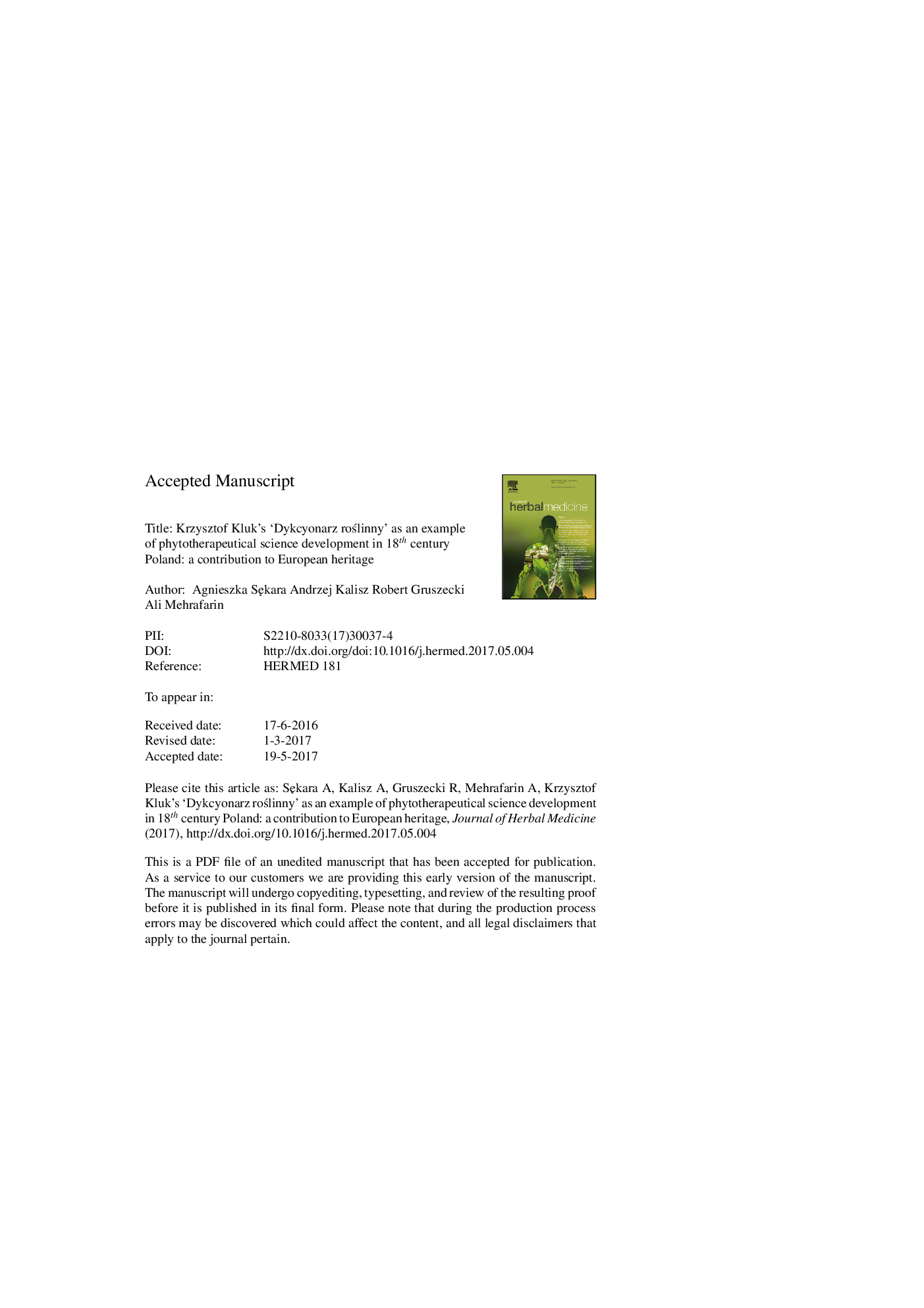| Article ID | Journal | Published Year | Pages | File Type |
|---|---|---|---|---|
| 8512983 | Journal of Herbal Medicine | 2017 | 23 Pages |
Abstract
'Dykcyonarz roÅlinny' ('Dictionary of Plants') by Krzysztof Kluk, published in 1786 (Vol. I), 1787 (Vol. II), and 1788 (Vol. III), contains the descriptions of 1598 species of algae, fungi and plants, to a large extent with their therapeutic and utilitarian value. The goal of this study was to present 'Dykcyonarz roÅlinny' as an important contribution to the European botanical heritage of the Age of Enlightenment. The accession of the state of knowledge in the area of herbal medicine was studied with analysis of the monographs of selected medicinal species described in 'Dykcyonarz roÅlinny' against their historical and contemporary therapeutic relevance. Monographs were developed based on Krzysztof Kluk's own scientific experience, supplemented by bibliographic references to ancient authors, 16th and 17th century botanists and Kluk's contemporary researchers. The novelty of the 'Dykcyonarz' was the regularisation of Polish nomenclature and the simultaneous application of the Linnaean classification system of plants. For the first time in the history of Polish botanical literature, Kluk used comprehensive knowledge of the morphology, anatomy and physiology of plants. He proposed accurate and comprehensible naming of the morphological parts of plants, enabling their precise descriptions. Information on the therapeutic use of herbs is mostly confirmed by modern scientific research. 'Dykcyonarz roÅlinny' by Krzysztof Kluk played an important role in systematising, improving and popularising the knowledge of medicinal plants and incorporated unique ethnobotanical information valuable to modern scientists.
Related Topics
Health Sciences
Medicine and Dentistry
Complementary and Alternative Medicine
Authors
Agnieszka SÄkara, Andrzej Kalisz, Robert Gruszecki, Ali Mehrafarin,
